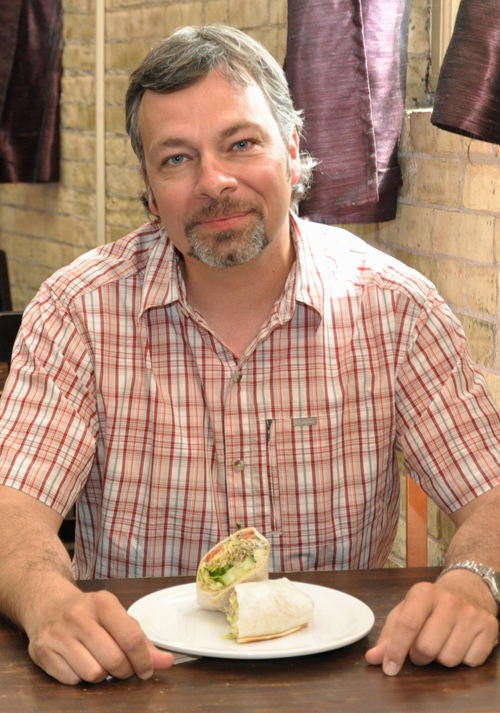
Think back to the last time you went out to eat. Did you clean your plate or leave something behind? Chances are you didn’t finish the bread that was served as part of your meal.
“We’ve allowed ourselves to create excess and accept waste as a cost of doing business,” says Bruce McAdams, a professor in the School of Hospitality and Tourism Management who has worked in food service management for more than 20 years. He says the economic and environmental cost of food waste is forcing restaurants to re-evaluate the way they serve food, from offering smaller portions to serving bread on request instead of as an automatic side dish.
According to a recent paper by McAdams, “Bread: A Business Case for Change in Foodservice,” an average of 25 to 35 per cent of bread went to waste at the full-service restaurant, hotel restaurant, golf club banquet hall and conference facility that took part in his study. The paper was prepared for Leaders in Environmentally Accountable Foodservice, an organization that promotes sustainable foodservice practices.
According to a study published by the International Journal of Life Cycle Assessment, the carbon footprint of an 800-gram loaf of bread ranges from 977 to 1,244 grams of CO2, outweighing the loaf itself. If 30 per cent of each loaf goes to waste, “that’s a huge amount of environmental savings being left on the table,” says McAdams. The study also found that wheat cultivation accounted for 41 per cent of a loaf’s carbon footprint, followed by consumption (storage and toasting) at 25 per cent and waste at five to 10 per cent.
Consumers often expect their meal to come with a serving of bread. “It’s become part of the perceived value package,” says McAdams. He recalls ordering a panini sandwich for lunch, and it was served with a large salad and eight pieces of bread, which he didn’t want. In his research, 85 per cent of survey respondents said they were in favour of bread being served upon request. Some restaurants have begun to charge for bread.
Food is being taken for granted due to its seemingly endless supply and low cost, says McAdams. But as crops fail and food prices increase, restaurants are becoming more aware of unnecessary waste. He says food prices, which have been artificially deflated by subsidies, are beginning to reflect the true cost of putting food on the table. Food prices are also driven by supply and demand. The growth of the middle class in China and India has led to an increased demand for food, he says. Fuel prices also play a role, affecting the cost of production and transportation from the farm to the grocery store.
When it comes to portion sizes, bigger isn’t necessarily better. McAdams says restaurants should focus more on the quality instead of the quantity of food they serve. One way to reduce food waste is to offer consumers a choice of portion sizes, but McAdams says restaurant owners are reluctant to adopt changes that may complicate their operations.
Food is also wasted for quality control. Large coffee chains, for example, often discard coffee 20 minutes after it was brewed. “The fact that you can throw out something that is still perfectly good but may have a slight variance in quality and dump it down the drain is something we’re going to have to get our heads around,” he says.
McAdams received $15,000 from the University’s Learning Enhancement Fund to make student-run PJ’s Restaurant more economically, environmentally and socially responsible. The new curriculum will teach students how to purchase local products; calculate the carbon footprints, food miles and nutritional content of menu items; and measure energy consumption and food waste.